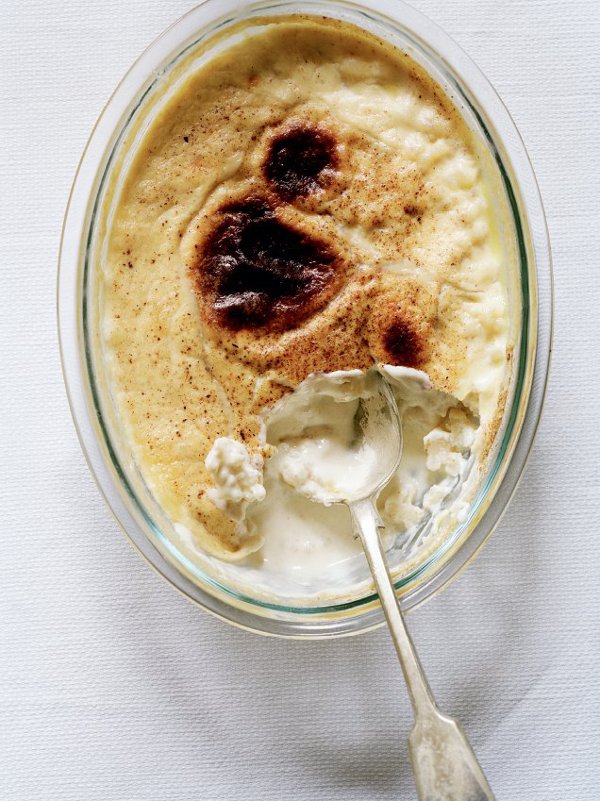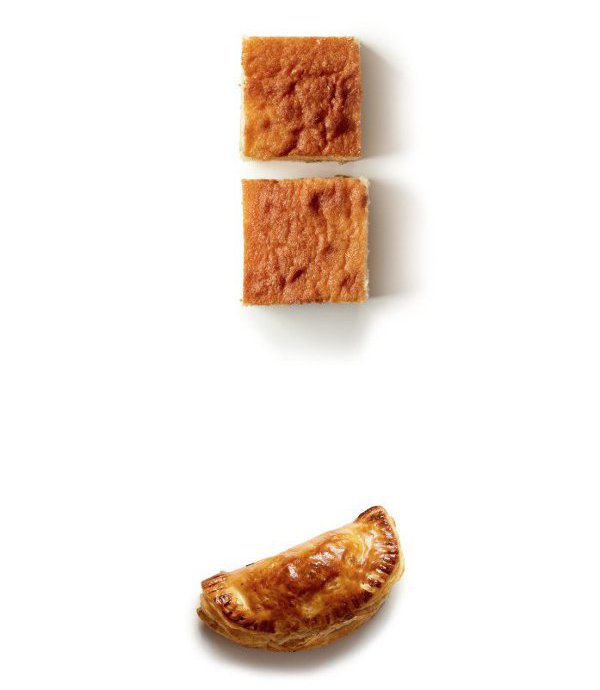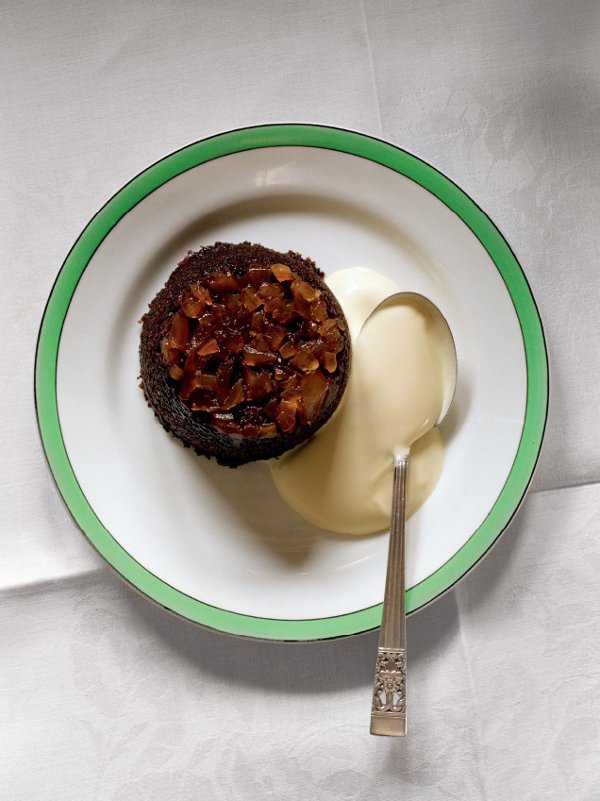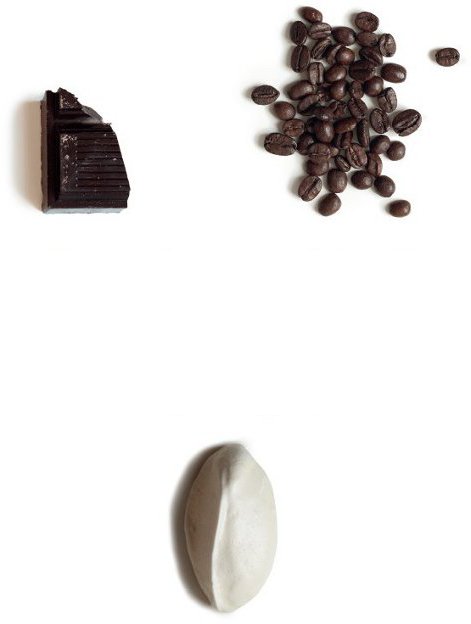Good Cook (25 page)
Authors: Simon Hopkinson
serves 4
3 tbsp butter
3 oz superfine sugar
3–4 oz pudding rice (or Spanish paella rice)
½ a vanilla pod, split lengthways
1 quart whole milk
5 oz double or heavy cream
pinch of salt
plenty of freshly grated nutmeg
For this cook, a proper, carefully made rice pudding is the glory of all British milk puddings. It is an intensely lactic arrangement of two perfect partners, so simply wedded that it almost beggars belief. I don’t understand the inclusion of egg yolks to thicken it; nor do I like it made in the style of a risotto, though quite popular, these days. No, that which truly appeals to me is the quietly slow absorption of what seems to be a tiny amount of rice, by a veritable flood of milk, left to get on all by itself until sporting a delicate, golden-brown skin and all wobbly beneath. And, together with that enticing fragrance of nutmeg and vanilla … Well, it is, quite simply, a gorgeous thing.
Preheat the oven to 300°F.
Melt the butter in a solid-based, flameproof casserole and add the sugar. Stir around and heat gently until gooey, then add the rice and vanilla pod, and continue stirring until the rice looks a touch puffed and sticky with sugar. Now, gently pour in the milk, which will seethe around the rice causing the volatile rice/butter/sugar mixture to set into lumps at once. However, fear not, for as you stir around in this milky mess with the aid of a wooden spoon, within minutes any sugary lumps will soon dissolve into the milk as it heats up. Continuing to stir, add the cream and salt, and bring the mixture to a simmer. Once this is reached, give the mixture a final stir and grate at least a third of a nutmeg over the surface (do not stir again). Pop into the oven and bake for about 60–90 minutes; if the surface burnishes too quickly, lay a loose sheet of kitchen foil over the pudding. Once there is a very nice, thin, tarpaulin-like skin on the surface and the pudding only just wobbles in the center, it is ready; remember, the rice will continue cooking a little as the heat wanes within. Serve at room temperature.

serves 4
1½ lb rhubarb
2 tbsp golden superfine sugar
juice of ½ a lemon
several thin flakes of unsalted butter
a little extra golden superfine sugar, for sprinkling
for the crumble mixture
1 cup very cold unsalted butter, cut into small chunks
3
1
/
3
cup all-purpose flour
7 oz golden superfine sugar
generous pinch of salt
to serve
Guernsey or any heavy cream
Let’s be honest about this: a crumble mix is nothing more than unmixed pastry, and all the better for that. I don’t believe in anything else, here, other than this traditional mix of butter, sugar and plain flour. No nuts. No oats. No “bits,” in other words. A pinch of salt is an imperative and should not be omitted. Finally, never make the mistake of patting/pressing the crumble mixture down, once piled on to the fruit. I like to carefully apply it in large spoonfuls, so allowing the mixture to trickle around the fruit, while also forming tiny hillocks so that, once cooked, the sugary-buttery-fruit juices nicely bubble up and around all over the place, especially at the edge of the dish, where they occasionally burn a bit. Very nice indeed, that.
Preheat the oven to 350°F.
Place all the ingredients for the crumble mixture in a roomy bowl. Deftly, using your fingertips, rub the butter into the flour, sugar and salt, while lifting and dropping the mixture back through the fingers, so handling the ingredients as little as possible—in the same way as one begins to make pastry.
Pile the rhubarb into a buttered dish, sprinkle with sugar, squeeze over the lemon juice and distribute the flakes of butter over the fruit. Cover the fruit with the crumble mixture, sprinkle over a little extra golden superfine sugar and place in the oven. Bake for about 40 minutes, or until jammy juices are oozing up around the edges of the dish, and the surface is pock-marked with golden pustules. Serve with lovely and thick Guernsey cream.

two sponges with a turnover
serves 4
20 dried apricots, approx. 150g
13 oz puff pastry, preferably in a sheet
3 oz marzipan
20 whole, skinned almonds
1 tbsp ground almonds
a few shakes of ground ginger
1 tbsp golden superfine sugar
2 tbsp softened butter
1 small egg, beaten
superfine sugar, to glaze
These flaky little pastries are an original idea, for me—and there are not many times when this happens. I guess that they may have once been inspired by a particularly good apricot Danish, but I remain unsure. However, they are devilishly good to eat.
Pour 350ml of boiling water over the apricots and leave to soak for at least 1 hour. Drain well, discarding the water. Divide the puff pastry into 4 pieces and roll out thinly (approx. 17–18cm square). Leave them to relax for 10 minutes in the fridge. Then, using a saucer, cut out 4 circles, not less than about 16cm in diameter.
Preheat the oven to 375°F. Meanwhile, take an apricot, open it up with a small knife to form a pocket, push in a small nugget of marzipan, together with an almond, then push the apricot together again. Repeat with the remaining apricots and place them on a large plate lined with a double fold of paper towels.
In a small bowl, mix together the ground almonds, ground ginger and sugar. Sprinkle a quarter this mixture over one half of each pastry circle, and arrange 5 stuffed apricots over this. Dot the apricots with small smears of the butter. Now, brush the edge of each circle with a little of the beaten egg and fold over the pastry to make a semicircle. Using a fork, crimp the edges together. Now brush the top surface with the remaining egg, sprinkle generously with superfine sugar and make 2 small holes in the top with the point of a knife for steam to escape. Place on a greased baking sheet and cook on the middle shelf of the oven for 25–30 minutes, or until crisp, puffed and golden. Allow to cool on a wire rack for about 5 minutes before eating. Serve with whipped cream (see
page 309
).

serves a generous 4
2
/
3
cup self-raising flour
2 rounded tsp ground ginger
1 tsp mixed spice
1 rounded tsp bicarbonate of soda
3¾ oz suet
3¾ oz fresh breadcrumbs
5½ oz jar preserved stem ginger
scant 7 oz milk
2 oz golden syrup
3 oz treacle (or molasses)
pinch of salt
1 large egg, beaten
softened butter, for greasing
This wickedly lovely pudding makes regular lunchtime appearances at our restaurant, Bibendum. I have always been fond of ginger puddings of any kind, but was happily astonished on one particular occasion when the very famous French chef Alain Ducasse (he with an absurd amount of Michelin rosettes to his name) came to dine. He so enjoyed this most British kind of pudding that he asked for the recipe. So I furnished him with it, and a great pleasure it was to so do.
Note: you may wish to make individual puddings here, using small molds. If so, reduce the cooking time by 30 minutes.
Sift the flour into a mixing bowl with the spices and bicarbonate of soda. Add the suet and breadcrumbs and mix well. Coarsely chop the stem ginger, including its syrup, in the bowl of a food processor. Warm the milk with half the mass of chopped stem ginger, the golden syrup, the treacle or molasses and a pinch of salt. Beat into the dry ingredients, with the egg, until sloppy and just dropping off the spoon.
Generously grease a 1-quart pudding basin with butter and put the remaining half of the chopped ginger mass in the bottom. Pour in the pudding mixture, cover with buttered and pleated kitchen foil, tie round with string and steam for 2 hours. Turn out on to a dish and serve with very cold thick cream or custard (see Marmalade Sponge with Cointreau Custard,
page 296
, omitting the orange liqueur).
serves 4
for the sponge
6 oz thin-cut marmalade, warmed
7 tbsp butter, at room temperature
3½ oz superfine sugar
2 large eggs, beaten
grated zest and juice of 2 large lemons
1 cup self-raising flour
pinch of salt
1 level tsp baking powder
for the orange custard
10 oz milk
½ a vanilla pod, split lengthways
4 egg yolks
1½ oz superfine sugar
2 tbsp Cointreau or Grand Marnier
Mum used to make many such sponges as this one when I was little. Jam, mostly, was the favorite sticky bit, but previously stewed apples, plums and gooseberries—not all at once—made seasonal appearances. The custard was always from Mr. Bird, but we loved it all the same; doesn’t everyone, if truth be told? However, it really is worth making the real McCoy, here, especially with the addition of an orange liqueur. A grown-up custard, to be sure.
You will need a round or oval baking dish, about 5cm deep, with a capacity of around 1 quart, well buttered and the base lined with a fitted sheet of dampened baking parchment paper.
Preheat the oven to 350ºF.
Pour the marmalade over the parchment paper in the baking dish and allow it to settle and cool. Cream the butter and sugar together until light and fluffy. Add the eggs, a little at a time, beating until really thick and white. Add the lemon zest and sift in the flour, salt and baking powder. Fold in carefully, along with the lemon juice. It should be of a dropping consistency.
Pile the sponge mixture over the marmalade, level off with a spatula and bake for 30–35 minutes, or until well puffed up, golden and firm. Check with a skewer—it should emerge clean. Allow to cool in the dish for 10 minutes.
To make the orange custard, heat the milk together with the vanilla pod in a heavy-bottomed saucepan. Remove from the stove and whisk for a few seconds to release the vanilla seeds into the milk. Briefly beat together the egg yolks and sugar. Strain the hot milk into the beaten egg and sugar, whisking as you go. Return to the saucepan and cook over a very low heat until limpid and lightly thickened. Add the chosen liqueur, give the custard a final vigorous whisk to fully blend and then pour into a warm jug. (Note: if you are unlucky enough to split the custard, a quick blast in a blender will rescue the drama.)
To serve the sponge, run a knife carefully around the edge, turn it out on to a serving dish and remove the parchment paper. Offer the custard at table.

chocolate, coffee & custard & a small meringue